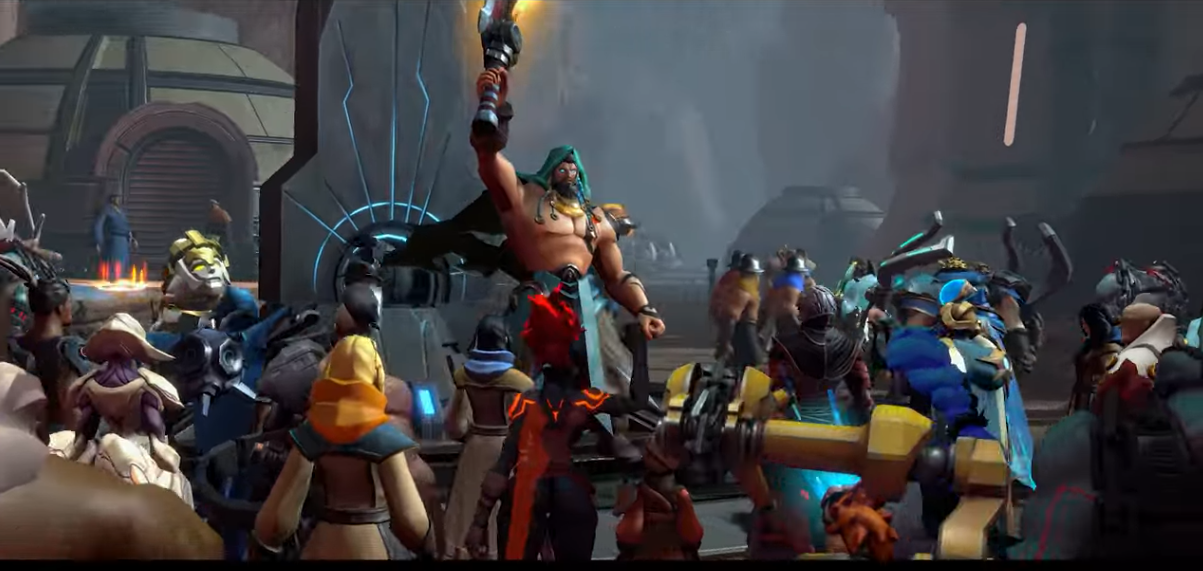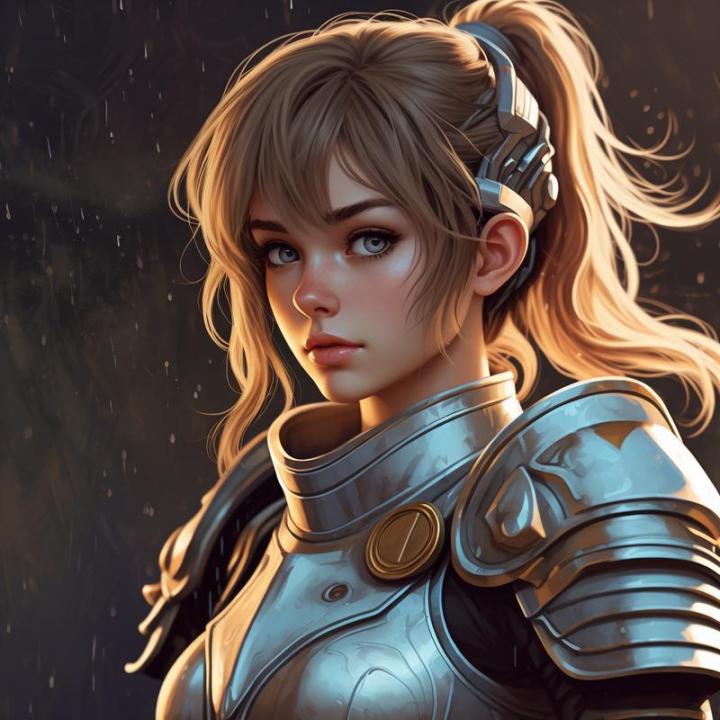Notifications

10 minutes, 8 seconds
-89 Views 0 Comments 0 Likes 0 Reviews

In a time when the MMORPG genre is grappling with fatigue and stagnation, Warborne: Above Ashes (WAA) arrives like a phoenix — not just above ashes in name, but in vision and execution. In a landscape dominated by legacy franchises and live-service fatigue, WAA doesn’t just offer an alternative — it offers a revolution or Warborne Above Ashes Solarbite. Emerging as a relatively unknown IP, the game has transformed from a niche curiosity to a breakout hit, quickly gaining traction with early-access players and building momentum at a pace few anticipated.
Following the lukewarm reception of other anticipated MMOs, including the much-hyped Havenhold, which recently concluded its preview phase, Warborne: Above Ashes now stands in stark contrast as a beacon of innovation. With its unique mechanics, immersive worldbuilding, and a refreshing approach to player agency, WAA isn't merely participating in the MMO arms race — it's rewriting the rules.
The Setting: A World Scarred and Reborn
The first thing that sets Warborne apart is its deeply atmospheric world — a post-cataclysmic realm not unlike a fantasy world torn through a filter of science fiction. Rather than relying on overused medieval tropes or high-fantasy clichés, the game presents players with a ravaged world where civilization is reassembling itself from the ashes of a magical-industrial collapse. Cities are built into shattered mountainsides, airships patrol fractured skies, and forgotten arcane technology lies buried beneath ash-covered ruins.
This world is not just visually stunning — it feels alive. NPCs follow schedules, regional conflicts dynamically evolve, and player actions influence both micro and macro scales of the game’s geopolitics. The narrative is subtly fed through world design, faction tensions, and exploratory storytelling rather than walls of exposition.
Gameplay Mechanics: Familiar Roots, Bold Innovations
At its core, Warborne: Above Ashes borrows the best aspects of traditional MMOs — open-world exploration, class-based combat, and large-scale cooperative events — but injects each with newfound purpose and player control.
1. Class Shaping System
One of WAA’s most impressive innovations is its Class Shaping system, a flexible job framework that allows players to mold their class over time based on in-world experiences. Instead of choosing a static class at the beginning, players start with a "Core Discipline" and gradually refine their abilities by performing specific tasks, undergoing trials, and forming allegiances with in-game guilds or factions. This not only allows for personal expression but ensures no two players build exactly the same character, even if they begin similarly.
2. Dynamic Combat Engine
Combat in WAA feels tactile and reactive — a hybrid between the strategic rhythm of tab-targeting and the adrenaline-pumping flow of action combat. Enemies respond intelligently, boss mechanics require coordination, and environment plays a crucial role. Weather conditions, terrain elevation, and even time of day can influence encounters.
The emphasis on skill and timing over gear-score grinding makes every battle feel engaging. It’s not about who has the best armor — it’s about who understands the fight.
3. World Impact Systems
Perhaps the most defining feature of Warborne is its World Impact Systems, a suite of mechanics that allow player choices to ripple across the game world. Player-led city building, political coups, faction betrayals, and economic upheaval are not relegated to endgame content — they’re available from mid-game onward and are woven into the leveling experience.
In one server, a player-led trade alliance managed to corner the market on rare minerals, leading to a full-scale war with a neighboring warlord faction. In another, a guild used its influence to sway a major city’s leadership into an isolationist policy, locking out crucial trade routes and changing the dynamics for hundreds of players. These aren't scripted events — they're organic developments born of WAA’s design philosophy: players shape the world.
Social Systems and Player Interaction
MMOs live and die by their social systems, and Warborne: Above Ashes excels in fostering meaningful, emergent interaction.
Guild Sovereignty Mechanics
Guilds in WAA are more than raid groups — they are political entities. Each guild can acquire land, build infrastructure, impose local laws, and even form coalitions with others. These player-governed regions become strategic hubs, contested resources, and cultural centers all in one. Systems are in place for elections, tax collection, and diplomatic treaties, allowing for an unprecedented level of social simulation.
Mentorship and Reputation Systems
New players are not abandoned to the wilds, either. WAA features a mentorship program where veterans can adopt mentees, earning both cosmetic rewards and practical in-game benefits. Meanwhile, a reputation system tied to both NPC factions and player behavior means every choice matters — betray a contract, and word gets out. Aid a struggling outpost, and they’ll remember you.
This focus on player accountability and legacy adds serious weight to social decisions and drives a sense of community often absent in other MMOs.
Visual and Audio Excellence
The aesthetic identity of Warborne: Above Ashes is not just technically proficient — it’s artfully cohesive. From scorched deserts with glass-sandstorms to bioluminescent ruins hidden beneath glaciers, every zone feels like a painting in motion.
The audio design deserves special mention. Orchestral swells accompany large-scale battles, while quiet ambient tones underline exploration and personal quests. Voice acting is sparse but meaningful, reserved for pivotal moments to emphasize narrative importance.
On high-end machines, the game supports full ray-tracing, dynamic weather with volumetric clouds, and lifelike facial animations. But impressively, it also scales well — mid-tier systems can still enjoy WAA’s grandeur without sacrificing too much fidelity.
Community and Post-Launch Support
One of the reasons WAA has thrived where others have stumbled is the active and transparent development team. Regular developer livestreams, feedback forums, and monthly Q&A sessions keep players in the loop. Bugs are addressed quickly, and content roadmaps are not only shared but discussed with the community.
Events are community-driven and often tied to lore — from server-wide invasions to scavenger hunts that unravel lost histories. The sense of collaborative storytelling is alive and well.
The Road Ahead
Despite being in early access, Warborne: Above Ashes already feels more polished and ambitious than many fully launched MMOs. The developers have teased upcoming expansions that include naval exploration, intercontinental airship wars, and even player-scripted questlines, which would allow guilds to craft their own stories for others to experience.
The game isn’t perfect — occasional balancing issues, server hiccups during peak hours, and a steep learning curve for new players still need attention. But these are growing pains, not fundamental flaws.
Final Thoughts
Warborne: Above Ashes is not just another MMO. It’s a reclamation of the genre’s potential — a return to the idea that virtual worlds should be more than theme parks. With its emergent storytelling, player-driven dynamics, and uncompromising ambition, it offers a glimpse at what the future of online gaming could be: alive, unpredictable, and profoundly human or Warborne Above Ashes Solarbite for sale.
In an industry that too often chases trends, Warborne dares to forge its own path — and it’s one well worth following.
Final Verdict: A genre-defining experience in the making. If you’ve been waiting for the next true MMO evolution, this is it.
mmoexp Warborne Above Ashes Solarbite cheap Warborne Above Ashes Solarbite

